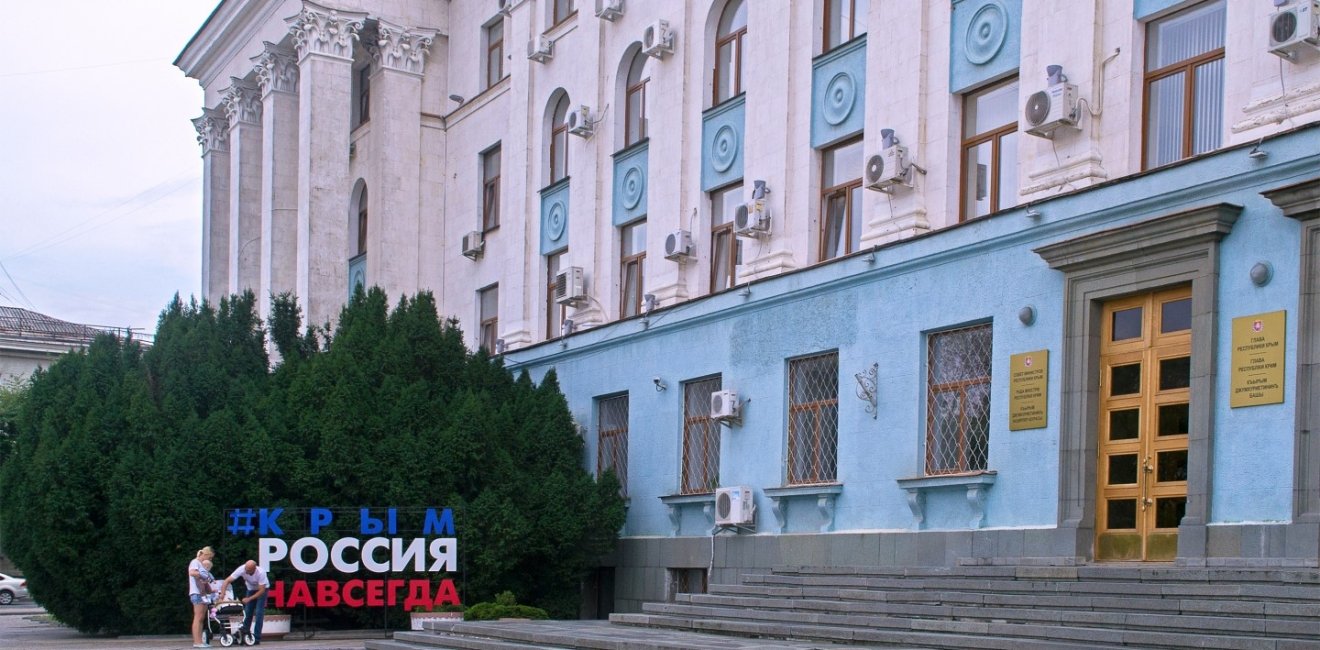
A blog of the Kennan Institute
February 2024 marked the tenth anniversary of Russia’s invasion and occupation of Crimea. In the eight years before the full-scale invasion, Crimea receded from most people’s radar. Today, however, it has regained prominence—as a base for attacks on Ukraine, a region Ukrainian forces are focused on liberating, and a big piece of the puzzle in securing peace for Ukraine. But Russia has devoted considerable technologies, both infrastructural and visual, to trying to persuade the world that Russian control of the peninsula is henceforth permanent.
Colonial Infrastructure
The most effective way for colonial powers to claim a territory is to build on it. Since the eighteenth century, when Russia first conquered Crimea, it has used infrastructure to secure and immortalize its hold on the territory.
An example of this is the dacha, a land plot awarded to Russian settlers as an incentive to move to Crimea and a hallmark of Russian imperial rule. It allowed thousands of well-to-do Russians to resettle in Crimea and reimagine it as a Russian riviera, a splendid outpost for the middle and upper classes to sojourn during the summer months.
During the Soviet era, while the image of a Crimean riviera was carefully preserved for mass consumption, the Soviet Union poured massive resources into military infrastructure on the peninsula. The Black Sea Fleet accounted for 140,000 military personnel in the 1980s, and Crimea became a foremost site for military research, production, and storage.
In addition to its military equipment factories and shipyards, Crimea had ten military airfields, control system for weapons, air defense system facilities, and nuclear warheads storage facilities.
Since the most recent Russian invasion of Crimea in 2014, Russia has continued to invest in infrastructural projects as a means of cementing Russia’s grip on the peninsula, securing loyalty from the population through improvement projects, and generally recasting the space as Russian.
Perhaps the most famous infrastructure projects are the Crimean Bridge and Tavrida Highway. In 2018, Russia completed the construction of bridge that connected Crimea to Russia with two parallel four-lane roads and a railway track between the Taman peninsula in Krasnodar Krai and the city of Kerch. The construction of this twelve-mile-long bridge cost $3.7 billion.
Two years later the four-lane Tavrida Highway, 1,606 miles long, was constructed, connecting the bridge with critical Crimean cities such as Simferopol, Sevastopol, and Yevpatoria.
Both the bridge and highway, while exemplifying Russia’s efforts to control and absorb Crimea into its space, also serve the specific military function of enabling the transport of troops and military. This vital logistical function explains Putin’s presence at the grand opening of both projects and Ukrainian forces’ intense focus on putting them out of commission since 2022.
Social Colonization through Infrastructure
To compensate for the consequences of the international sanctions that have plunged Crimea into an economic abyss, Russia has invested heavily in social infrastructure: kindergartens, schools, and hospitals. Crimea is allegedly the most subsidized region under Russian control, accounting for 65–70 percent of direct subsidies from the Russian federal budget. Investment in social infrastructure, while aimed at winning the hearts and minds of Crimea’s population, has simultaneously created sites for surveillance and dissemination of Russian propaganda. Especially through schools and control of curricula, Russia strives to integrate children and their parents into the “Russian world.”
When I visited Crimea in 2020 for research, it was apparent that even the most outspoken opponents of Russian occupation regarded these infrastructure projects with approval.
Visual Colonization
Most of my interlocutors in 2020 were convinced that war against Ukraine was coming. The feeling of approaching war was palpable not only because of the growing military infrastructure but also from changes in the visual landscape.
The Crimean public space had been visually reorganized around Soviet and war nostalgia themes. Already in January, four months before Russia’s Victory Day on May 9, which celebrates success and valor in World War II, a huge banner was hanging in Sevastopol: “75 years of the victory (1945–2020)! Victory in the Great Patriotic War was, is, and always will be the fulcrum of Russia’s people and its sustainable development!”
Nearby you could see a random restaurant sign, “Heroes of a Great Country,” and a poster featuring a Soviet soldier.
Visual materials in all public spaces remind Crimeans of their privilege of belonging to the greatest country in the world that, if necessary, “can do it again,” a slogan promising to win in a crusade against the West just as happened in 1945, according to current revisionist history.
The war propaganda follows you everywhere, in the names of streets, monuments, and exhibitions scattered around the cities.
One such monument is a tall stele with statues of soldiers on three sides. One statue is of a soldier of the Crimean War (1853–1856), the second is of a Soviet soldier of World War II, and the third is of a Russian soldier who participated in the annexation of Crimea in 2014. This monument is a pinnacle of Russian propaganda tailored to a Crimean audience.
All these visual materials have made Crimea a Disneyland of Soviet/Russian nostalgia. Everything that could remind one of Ukraine has been removed or painted over. It is prohibited to display remembrances of the peninsula’s history between 1991 and 2014.
The same goes for the Crimean Tatar heritage. The Bakhchisaray Palace—the only testament to Crimean Tatar statehood—is under permanent “construction,” or, more accurately, destruction. Any Crimean Tatar initiative to preserve their identity is under the strict control of the occupying authorities.
Russia’s Normalization Efforts Meet Ukrainians’ Tenacity
The longer Russia’s occupation of Crimea lasts, the more permanent it seems. Russia has normalized war and a Russian presence. Memories of the “before times” fade, or those with intact memories have left.
But Russia’s colonization of space and memory obscures one vital point: the eventual return of the Crimean Peninsula to Ukrainian control and Ukrainian society when Russia’s bellicosity crumples.
The opinions expressed in this article are those solely of the author and do not reflect the views of the Kennan Institute
Author


Kennan Institute
After more than 50 years as a vital part of the Wilson Center legacy, the Kennan Institute has become an independent think tank. You can find the current website for the Kennan Institute at kennaninstitute.org. Please look for future announcements about partnership activities between the Wilson Center and the Kennan Institute at Wilson Center Press Room. The Kennan Institute is the premier US center for advanced research on Eurasia and the oldest and largest regional program at the Woodrow Wilson International Center for Scholars. The Kennan Institute is committed to improving American understanding of Russia, Ukraine, Central Asia, the South Caucasus, and the surrounding region through research and exchange. Read more

Explore More in Focus Ukraine
Browse Focus Ukraine
Talking to the Dead to Heal the Living

Ukrainian Issue in Polish Elections


